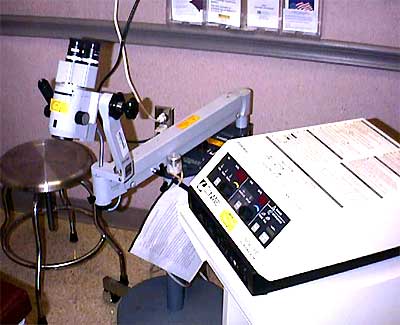 |
Susan Rose, RN
|
 |
Leep stands for "Loop Electrosurgical Excision Procedure."
It is the most invasive procedure done in an office setting.
Some patients need to have the procedure in the OR.
An informed consent will need to be signed and witnessed.
The procedure produces good specimens and causes low risk of
affecting childbearing ability. It has mostly replaced
the older procedure of cryotherapy (freezing) of abnomal cells.
Most patients are happy to find a treatment to help them.
Some will even agree to have it done the first visit it is
offered, due to travel time, rather than coming back
another day for the procedure.
Make sure you check your vital signs before starting.
You may want to keep a b/p pole outside the exam door
in case you want to reach for it during the procedure.
The procedure is not painful due to lidocaine administration,
ususally 10ccs are given.
The type of lidocaine (1 or 2%, with or without epi) will need
to be requested by the gynecologist.
A short needle is used on a 10 cc barrel syringe.
A 22g 3inch spinal needle reaches the cervix so the short
needle is removed and the longer one put on.
Administration can be very uncomforable for the first shot or two.
Later injections already have some anesthesia
from the first injection.
If the doctor prefers to use lidocaine with epi, it may
cause a systemic flush. The patient is reassured and it
usually passes quickly.
The room needs to be opimized for space since the culposcope,
leep machine, tray table and chair are
all near the end of the exam table.
To see how the tray table looks, click here.
The pieces such as the grounding pad, yellow handpiece,
smoke tubing, straw to fit into speculum to help vaccume smoke,
coated speculum and ball and loop electrodes are
all in the clean utility room. See photo of these parts.
I try to have at least one complete set up on the shelf
that is part of the leep machine.
Monsels paste and formalin jars will be needed as well.
The doctor will need a separate try table to "tag"
or suture markers into the specimins
before they go into the formalin jars.
See photo for suture equipment and a few instruments you might need.
Typical post-procedure instructions are seen here.
| Next Page |
| Home |